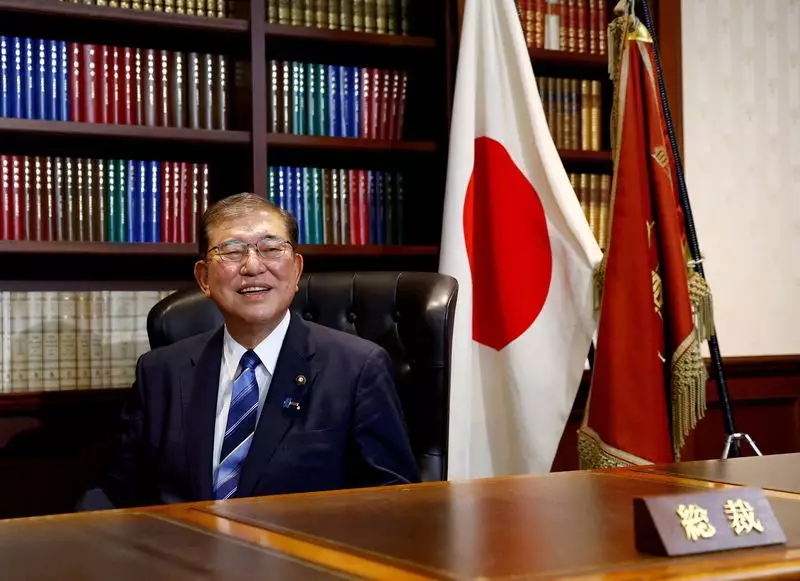As Shigeru Ishiba steps into the role of Japan’s new prime minister, the nation’s fiscal future hangs in the balance, requiring a delicate balance between stimulating growth and managing inflation. Ishiba has asserted that maintaining an accommodative monetary policy is crucial for the Japanese economy, which is still grappling with the aftereffects of prolonged stagnation. The emphasis on keeping borrowing costs low indicates a recognition of the fragile nature of the current economic recovery, suggesting that the government must act decisively to shield vulnerable sectors of society.
Historically, Ishiba has been critical of the Bank of Japan’s (BOJ) aggressive monetary easing measures. However, his recent comments signal a potential strategic shift. By stating that the BOJ must collaborate closely with the government, he implies a willingness to support measures that foster economic stability, particularly in the context of rising living costs that disproportionately affect low-income citizens. This approach indicates a pragmatic understanding of the complexities involved in managing both monetary policy and the broader economic landscape.
In conjunction with emphasizing monetary policy, Ishiba has committed to addressing the mounting economic pressures faced by ordinary citizens. He has pledged to formulate a fiscal response aimed at cushioning the impact of rising costs for households, particularly the most disadvantaged. The focus on low-income families reflects a broader commitment to social equity, distinguishing Ishiba’s agenda as one that seeks to alleviate immediate burdens while maintaining a long-term vision for economic resilience.
Moreover, the urgency in his call for an early compilation of fiscal measures underscores the need for swift action. As the global economy becomes increasingly interconnected, vulnerabilities in Japan’s economic framework prompt calls for more robust government intervention. Ishiba’s dual approach of maintaining accommodative monetary policy while preparing fiscal relief initiatives embodies a holistic strategy to tackle the public’s growing concerns.
Looking ahead, Ishiba must navigate a landscape that includes the recently adjusted interest rates led by the BOJ. Following the termination of negative interest rates and the gradual increases in borrowing costs, Ishiba’s statements hint at a potential divergence between his government’s focus and the central bank’s policies. Although he acknowledges the necessity for the BOJ to continue on a path toward more normalized monetary policy, he also emphasizes the importance of stability, suggesting a careful approach to any forthcoming rate adjustments.
Ishiba’s recognition of deflation’s lingering grip on Japan also highlights a critical challenge. The transition to a fully inflationary environment is fraught with risk, particularly if consumer confidence remains low. His past endorsements of the BOJ’s trajectory toward a normalized approach indicate alignment, yet his recent observations on consumption reflect a nuanced understanding of the intricate dynamics at play.
As Shigeru Ishiba prepares to assume the prime ministership, his economic philosophy will undoubtedly shape Japan’s fiscal landscape. Balancing the immediate needs of the populace with the overarching objectives of monetary policy will be no small feat, but a thoughtful approach can pave the way toward a more resilient and equitable economic future for Japan.

